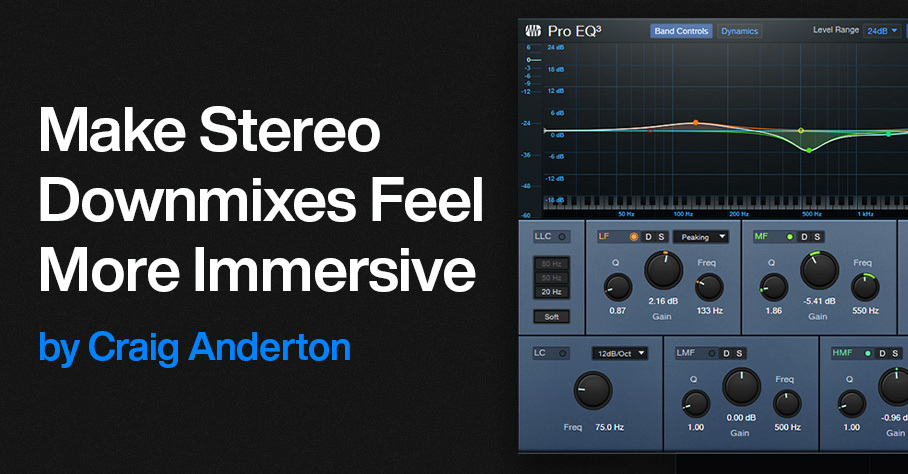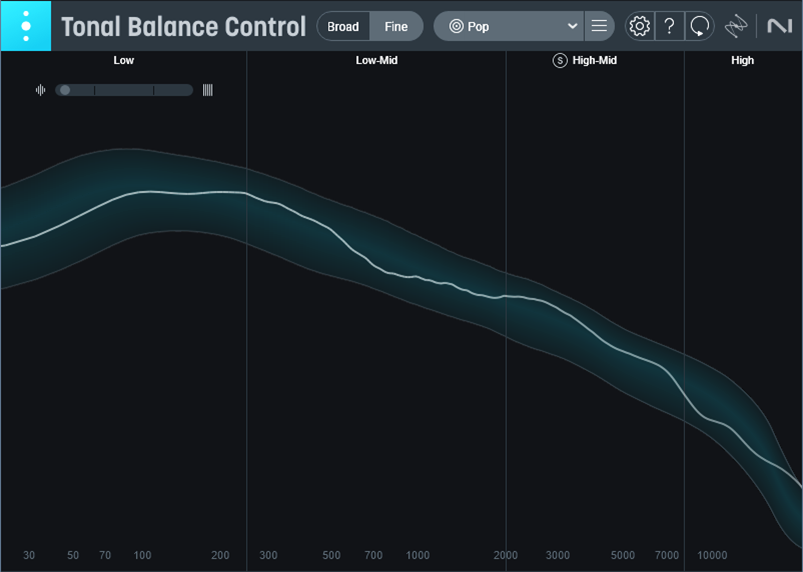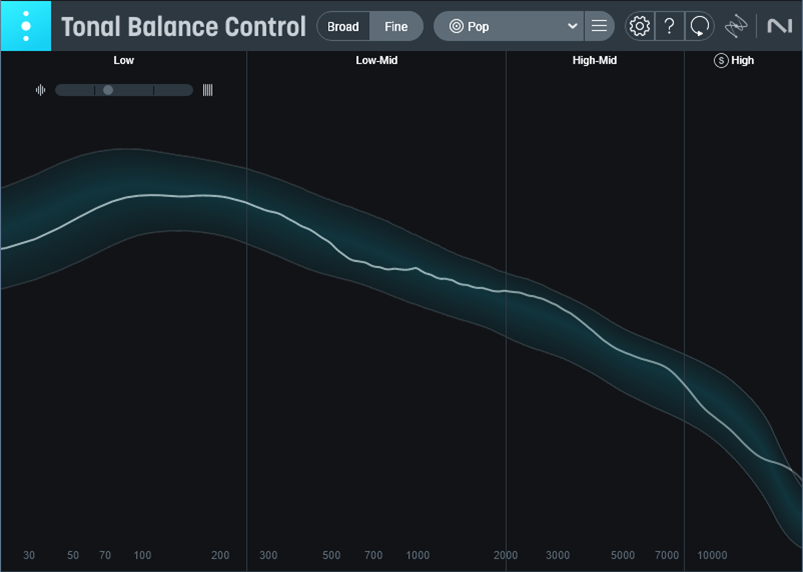Make Stereo Downmixes More Immersive

By Craig Anderton
One of Atmos’s coolest features is scalability. No matter how complex your Atmos project may be, you can render it as Binaural, 5.1, 5.1.2, 7.1, etc.—or even as conventional stereo.
As mentioned in a previous blog post, I now release Atmos Binaural and Stereo versions of my music on YouTube. However, although downmixing to stereo from Atmos retains the instrumental balance well, the frequency response seems a bit off compared to Atmos Binaural.
So, I used iZotope’s Tone Balance Control 2 to figure out what was happening. This analysis plugin is the result of dissecting thousands of master recordings. It shows a frequency response range within which different musical genres fall.
Fig. 1 shows the response curve of the downmixed stereo file derived from an Atmos mix. This is what most of my mixes look like before they’re mastered. Here. it pretty much skates down the middle of the “pop” curve.
Figure 1: Averaged frequency response curve of the stereo downmix.
Fig. 2 shows the averaged response curve of the Atmos Binaural mix. There are some obvious, and audible, differences.
Figure 2: The response curve of the Atmos Binaural render looks semi-mastered.
There’s a small bass bump, a dip in the midrange, and a slight boost in the “intelligibility” region around 2 to 3 kHz. Interestingly, these are like the EQ changes I apply when mastering.
Next, I created a Pro EQ3 curve that applied the same kind of EQ changes to the downmixed stereo file (fig. 3).
Figure 3: Pro EQ3 compensation curve for making the stereo downmix sound more like the Atmos Binaural mix.
Now the curve is much closer to the Atmos Binaural curve (fig. 4).
Figure 4: Averaged frequency response of the downmixed stereo file, after applying the compensation curve.
Does this mean that Atmos Binaural is tinkering with the sound? I don’t know. It may be a natural result of trying to translate an Atmos surround-based mix into Binaural audio. It may be a way to tweak the sound a bit to make it more consumer-friendly. That wouldn’t surprise me—most of what plays back music these days hypes the sound. The EQ difference isn’t huge, but it’s enough to give a slight perceived enhancement.
Let’s hear the difference. The audio example plays three 18 second samples of the same part of a song, all adjusted to around -12 LUFS using the Waves L3-16 multiband limiter. The first part is the stereo downmixed file. The second part is the Atmos Binaural file. The third part is the stereo downmixed file, but processed with the EQ compensation curve. Note that it sounds much closer to the Atmos Binaural version (although of course, without the spatial enhancements).
The audio example has drums, voice, guitars, bass, and synth. It’s a representative cross-section of what EQ affects the most in a mix. To my ears, the EQ-compensated downmix is an improvement over the unmastered downmix, and focuses the track a bit better.
So, the next time you want to downmix an Atmos mix to create stereo, consider the above when you want to minimize the difference between Atmos Binaural and stereo. Then, apply whatever other mastering you want to apply to both versions. You’ll end up with stereo mixes that may not have the depth of Atmos Binaural, but they’ll sound a lot closer.



